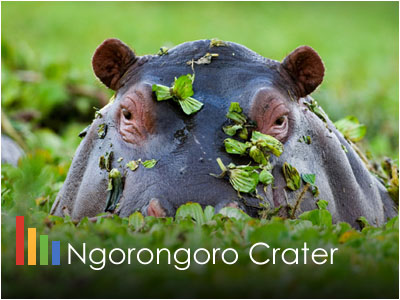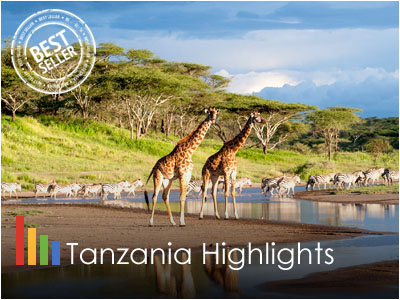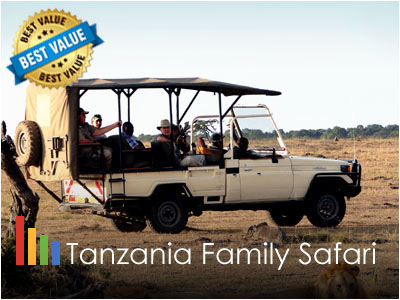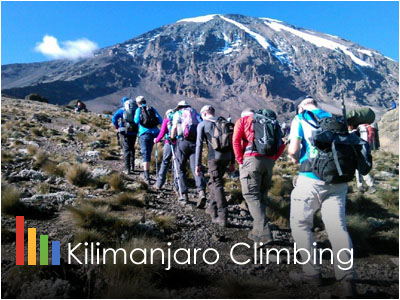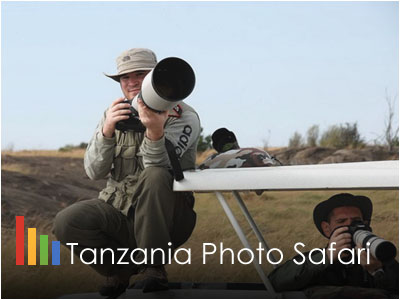Tarangire National Park, Tanzania, Africa
Tarangire National Park - Tanzania, Africa
Tarangire National Park is probably one of the least visited of the northern Tanzanian game parks, and retains a real air of undiscovered Africa, particularly in the south of the park. Just a two hours drive away from Arusha, the park is a nice stop if time does not allow for a visit to Serengeti and Ngorongoro. Tarangire National Park is named after the Tarangire River that flows through the park. It is the vast number of baobabs that first capture the eye as you enter Tarangire National Park. The gently rolling countryside is dotted with these majestic trees, which seem to dwarf the animals that feed beneath them.
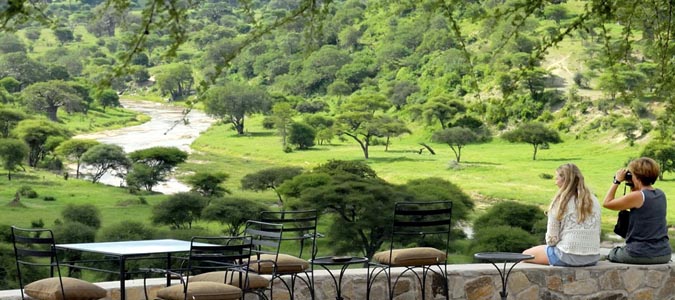
Basic Facts - Tarangire National Park
Tarangire National Park covers 2600 sq km of grassland and floodplains, and a large proportion of tall acacia woodland just south of the large open grass plains of southern Maasailand. Tarangire is beautifully unspoilt, and safari drives through the park enjoy wide views to distant variously purpled formations of volcanic mountain ranges.It is the vast number of baobabs that first capture the eye as you enter Tarangire National Park. The gently rolling countryside is dotted with these majestic trees, which seem to dwarf the animals that feed beneath them. The park is located 118 km (75 miles) southwest of Arusha.
More About Tarangire National Park
Tarangire National Park is located 120 km from Arusha, in Tanzania's Manyara Region. It is bordered with Tarangire Wildlife conservation area to the northeast, an area set apart by the government, to cater for the needs of the local people as a grazing ground for their herds. Accessing Tarangire National Park is by road from Arusha or Lake Manyara following a surfaced road to within 7km (four miles) of the main entrance gate. One can continue on to Ngorongoro Crater and the Serengeti. Charter flights from Arusha and the Serengeti National Parks are also available. The name of the park originates from the Tarangire River that crosses the park. The Tarangire River is the primary source of fresh water for wild animals in the Tarangire Ecosystem during the annual dry season. The Tarangire Ecosystem is defined by the long-distance migration of wildebeest and zebras. During the dry season thousands of animals concentrate in Tarangire National Park from the surrounding wet-season dispersal and calving areas. It covers an area of approximately 2,850 square kilometers (1,100 square miles.) The landscape is composed of granitic ridges, river valley, and swamps. Vegetation is a mix of Acacia woodland, Combretum woodland, seasonally flooded grassland, and baobab trees.
Often described as Tanzania's most underrated national park, Tarangire is one of Africa's little-known gems and a must for any northern circuit itinerary. Boasting a variety of wildlife as diverse as its landscape, Tarangire is also the park that can boast being home to Tanzania's largest population of African elephants. With four of the Big Five also residing within the park, it is a great spot for a day trip from Arusha or as an addition to a Serengeti/Ngorongoro centreed itinerary. Named for the Tarangire River which flows through it, the park is an excellent choice during the dry season when animals are forced to move closer and closer to the river in search of water. Set against a backdrop of majestic baobab trees and twisted acacia, it makes for a beautiful experience. For more information regarding tours and safaris to Tarangire National Park, please DO NOT hesitate to Contact Us.
The park is famous for its high density of elephants and baobab trees. Visitors to the park in the June to November dry season can expect to see large herds of thousands of zebra, wildebeest and cape buffalo. Other common resident animals include waterbuck, giraffe, dik dik, impala, eland, Grant's gazelle, vervet monkey, banded mongoose, and olive baboon. Predators in Tarangire include lion, leopard, cheetah, caracal, honey badger, and African wild dog. The oldest known elephant to give birth to twins is found in Tarangire. A recent birth of elephant twins in the Tarangire National Park of Tanzania is a great example of how the birth of these two healthy and thriving twins can beat the odds. Home to more than 550 bird species, the park is a haven for bird enthusiasts. The park is also famous for the termite mounds that dot the landscape. Those that have been abandoned are often home to dwarf mongoose. In 2015, a giraffe that is white due to leucism was spotted in the park. Wildlife research is focused on African bush elephant and Masai giraffe.
The birds within the Tarangire are also quite many, there are over 500 species that have been identified here. The lovebirds that are yellow collared, the shy starlings are in plenty and widespread in Tanzania. Mainly, the dry open woods like e acacia thickets, as well as many of its significant baobab trees make up the vegetation of the Tarangire. The stunning acacia tortillis trees not forgetting the occasional palm tree. There are also huge flat swamps within the woodlands in the south that get very impassable during the rains. During the rest of the year; they will also uniformly dry in green.
While Serengeti's animal migration has attained mundane fame, for many tourists, little is known of Tarangire annual migration. The difference with Serengeti however is that, in Serengeti animals migrate away from the park during the dry season (June to October), the opposite happens in Tarangire; animals migrate from Maasai Steppe to the park during the dry season. They migrate to the park in search for water, which is provided by Tarangire River, and predators migrate along in search for preys. During this period the park has the largest concentration of animals than in any park in the northern Tanzania.
Elephants can be seen in herds of up to 600 at a time, along with masses of wildebeest, zebra, eland, hartebeest, buffalo and oryx, who, migrate from the dry Maasai steppe to the gleaming Tarangire River in search of water during the dry season. The river may reduce in size, but always provides some water for these animals who gather in great numbers along its banks. Predators never go hungry here. Although uncommonly seen, pythons have taken to climbing trees in Tarangire, but as with all snakes they avoid contact with humans. November to February is the time of plenty with succulent green shoots appearing just in time for the newborn wildebeest and zebra. By March everything is lush and wild flowers and butterflies are out in force. Birds are at their busiest and more than 550 species have been recorded.
More people are attracted by the giant pythons and large herds of elephants. the park is also famous for migrant birds. The animals mostly disperse during April and May, when there is widespread greenery, vegetation and standing water to encourage all the grazers further afield. In June, the eland and oryxes begin to return, followed by elephant towards the end of the month. Tarangire is a great spot for elephant gatherings at the end of the rainy season in June, and zebra and wildebeest return together through July. By mid-August all the animals are congregating around their last reliable water source, the Tarangire River. The calving season falls in the early months of the year, through January, February and March, and so makes the most of the fresh grass during the rainy season..
The game viewing from July though to October is exceptional but for the remainder of the year the majority of game migrates out of the park, onto the floor of the Rift Valley and to the grazing grounds of the Masai steppe. As a result, we would advise visitors not to expect high concentrations of game in the off season months, but would still recommend travelling here to those who want to avoid the crowds. The best time to visit Tarangire is probably in the dry season from June - October, where the game viewing is at it's best. Tsatse flies tend to be pretty bad from December to March so although this is a good time to go to the Serengeti for the wildebeest calving, Tarangire is best avoided at this time.
AfriChoice operates a wide range of carefully designed tours and safaris to Tarangire National Park by providing transport and booking a hotel for you. Our safari consultants will always be at your assistance should you need a tailor-made holiday to this unique destination. NB: For more information regarding Tarangire National Park, DO NOT hesitate to Contact Us.
Contact Us for more information:
Tanzania Popular Wildlife Safaris
-
Serengeti Safari Adventure
Serengeti 3 Days Safari
-
Ngorongoro Crater Tour
Ngorongoro Crater Safari
-
Tanzania Highlights Safari
Tanzania Wildlife Safari
-
Best of Tanzania Safari
Best of Tanzania Safari
-
Tanzania Family Safari
Tanzania Family Safari
-
Mt. Kilimanjaro Climb
Mount Kilimanjaro Tanzania
-
Tanzania Photo Safari
Tanzania Wildlife Photo Safari
-
Tanzania Safari & Zanzibar
Tanzania Safari & Zanzibar Beach



 Paul Kitching - UK
Paul Kitching - UK Karen Howard - CANADA
Karen Howard - CANADA



